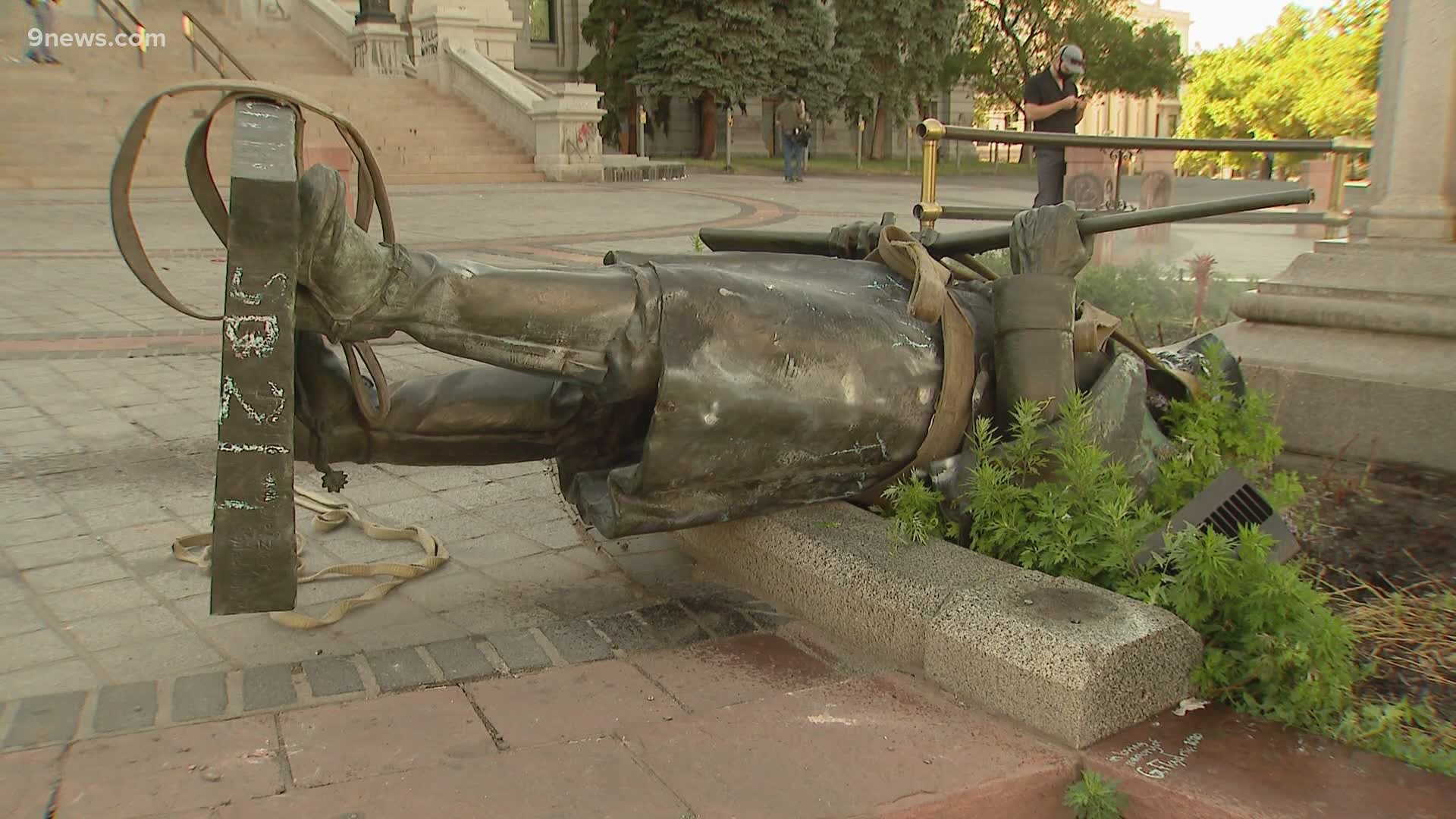DENVER — The toppled Civil War monument "On Guard" has a new home.
History Colorado installed the statue this week. The monument toppled by protesters following the death of George Floyd was installed on the west side of the state Capitol in 1909 to honor Coloradans who served in the Union Army.
In 2002, the state legislature, in consultation with Cheyenne and Arapaho descendants of Sand Creek, added a new plaque to the monument condemning the 1909 plaque's mischaracterization of Sand Creek as a "battle" rather than an atrocity.
"What you really want to do is use the statues as teachable moments," Lonnie Bunch, the first African American and first historian to serve as Secretary of the Smithsonian Institution, said. "Some of these [statues] need to go, but others need to be taken into a park, into a museum, into a warehouse and interpreted for people because they're part of our history."
The plaque at the monument reads:
The controversy surrounding this Civil War Monument has become a symbol of Coloradans' struggle to understand and take responsibility for our past. On Nov 29, 1864. Colorado's First and Third Cavalry, commanded by Colonel John Chivington, attacked Chief Black Kettle's peaceful camp of Cheyenne and Arapaho Indians on Sand Creek banks, about 180 miles southeast of here.
Colonel John M. Chivington led about 700 U.S. volunteer soldiers on Nov. 29, 1864 to a village of about 500 Cheyenne and Arapaho camped along the Big Sandy Creek banks in southeastern Colorado.
While the Cheyenne and Arapaho peoples thought that they were under the U.S. Army's protection, Chivington's troops targeted and killed more than 150 civilians, mostly women, children, and the elderly. The massacre was condemned following three federal inquiries.
History Colorado welcomes museum visitors to share their opinions and create a space for contemplation and consideration.
RELATED: Descendant of Indian chief killed in Sand Creek Massacre wanted Denver's Civil War statue to stay
SUGGESTED VIDEO: COLORADO'S HISTORY

